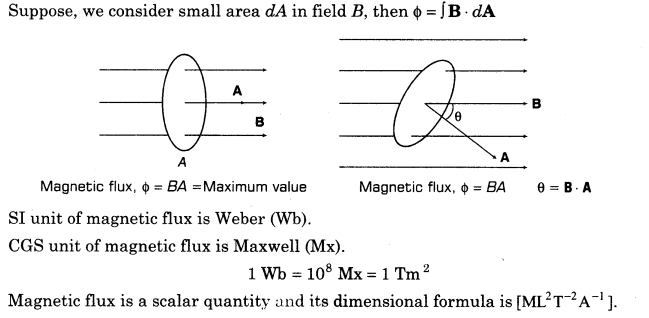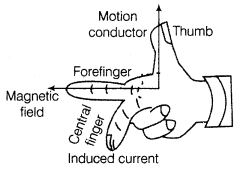Notes For All Chapters Physics Class 12 CBSE
1. Magnetic Flux The magnetic flux linked with any surface is equal to total number of magnetic lines of force passing normally through it. It is a scalar quantity.
2. The phenomenon of generation of current or emf by changing the magnetic flux is known as Electromagnetic Induction EMI).
3. Faraday’s Law of Electromagnetic Induction
First Law Whenever magnetic flux linked with the closed loop or circuit changes, an emf induces in the loop or circuit which lasts so long as change in flux continuous.
Second Law The induced emf in a closed loop or circuit is directly proportional to the rate of change of magnetic flux linked with the closed loop or circuit
where, N = number of turns in loop.
Negative sign indicates the Lenz’s law.
4. Lenz’s Law The direction of induced emf or induced current is such that it always opposes the cause that produce it.
NOTE: Lenz’s law is a consequence of the law of conservation of energy.
5. If N is the number of turns and R is the resistance of a coil. The magnetic flux linked with its each turn changes by dФ in short time interval dt, then induced current flowing through the coil is
6. If induced current is produced in a coil rotated in a uniform magnetic field, then
7. Motional Emf The potential difference induced in a conductor of length l moving with velocity v, in a direction perpendicular to magnetic field B is given by
8. Fleming’s Right Hand Rule If the thumb, forefinger and middle finger of right hand are stretched mutually perpendicular to each other such that the forefinger points the direction of magnetic field, thumb points towards the direction of magnetic force, then middle finger points towards the direction of induced current in the conductor.
9. The induced emf developed between two ends of conductor of length l rotating about one end with angular velocity ω in a direction perpendicular to magnetic field is given by,
10. The induced emf can be produced in a coil by
(i) putting the coil/loop/circuit in varying magnetic field.
(ii) changing the area A of the coil inside the magnetic field,
(iii) changing the angle 0 between B and A.




Leave a Reply